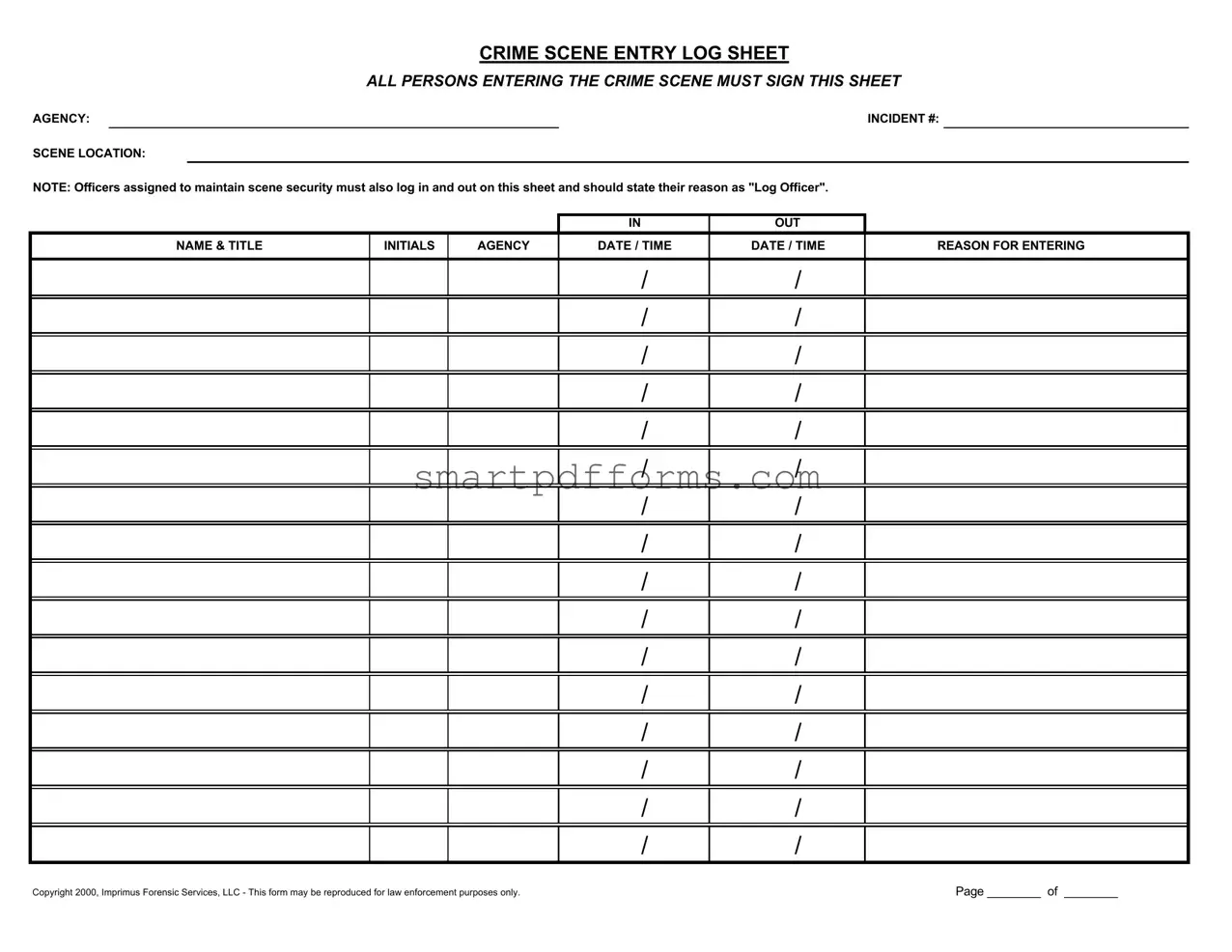Blank Crime Scene Entry Log PDF Template
The Crime Scene Entry Log Form serves as an essential tool to meticulously record all individuals who enter and exit a crime scene. This rigorous documentation, which includes details such as name, title, initials, agency, and the dates and times of entry and exit, alongside the reason for entering, ensures the integrity and security of the scene. To maintain the highest standards of accountability and control, it's crucial for all visitors, including officers assigned for scene security, to be accurately logged.
Ensure the meticulous management of your crime scene by filling out the form accurately. Begin by clicking the button below.
Make This Document Now

